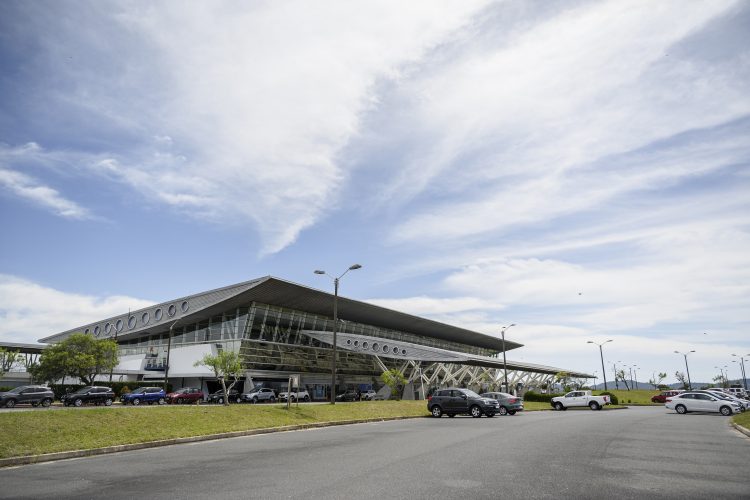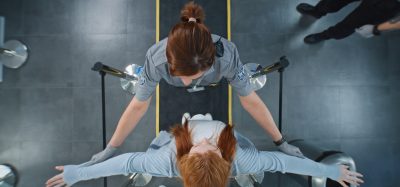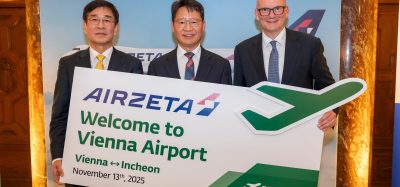Corporación América Airports: expanding from two airports in Uruguay, to eight
Posted: 31 July 2024 | Diego Arrosa | No comments yet
Diego Arrosa, CEO of Aeropuertos Uruguay, writes exclusively for International Airport Review’s Leaders’ Series. Diego outlines their expansion from two airports in Uruguay, to eight, as well as passenger trends, sustainability commitments and their innovation focuses for 2024.


Credit: Aeropuertos Uruguay
For the past 20 years at Aeropuertos Uruguay, we have been committed to developing the airport and aviation industry in Uruguay by managing Carrasco International Airport as well as Punta del Este International Airport, the most important terminals in the country. We have invested in technology, services and infrastructure, transforming them into iconic places for the country.
In 2021, the Uruguayan government approved a law through which it determined the development of the aviation industry as strategic for the country, and created a new airport network, composed by eight airports in the entire country: Carrasco and Punta del Este, and adding the airports of Carmelo, Rivera, Salto, Paysandú, Melo and Durazno. All of them were chosen due to their strategic location and their potential for development as well as their importance to the country.
Through this law, the country established the commitment to transform the industry and subsequently gave the concession to Aeropuertos Uruguay, tasking us with the responsibility to invest in modernising the airport infrastructure and operating them.
Join our free webinar: Revolutionising India’s travel experience through the Digi Yatra biometric programme.
Air travel is booming, and airports worldwide need to move passengers faster and more efficiently. Join the Digi Yatra Foundation and IDEMIA to discover how this groundbreaking initiative has already enabled over 60 million seamless domestic journeys using biometric identity management.
Date: 16 Dec | Time: 09:00 GMT
rEGISTER NOW TO SECURE YOUR SPOT
Can’t attend live? No worries – register to receive the recording post-event.
To drive the modernisation of these six new airports we put in place an ambitious investment plan to be implemented over approximately three years to transform the infrastructure at the six new airports. Our objective is to bring them up to international operational safety standards set by the International Civil Aviation Organization (ICAO), to incorporate new state-of-the-art systems and equipment and technology to develop these airports, improve the country’s connectivity, and bring development to more communities far away from the capital.
In 2022, we inaugurated the new Carmelo International Airport, which achieved record breaking traffic within months of being open. In 2023, we inaugurated Rivera International Airport, which made history by becoming the first binational (Uruguay-Brazil) airport in the region and the second worldwide, and in 2024 we have so far inaugurated Salto International Airport and we are currently working on the construction of the airports in Melo, Paysandú and Durazno.
A new era for airports of Uruguay
Airports and air connectivity are engines of development, so we are committed to extending our vision of quality, safety, innovation and services to the inland airports, attract new audiences, and turn the air terminals into hubs of activity for local ecosystems.
We are proud to be part of this modernisation process as we aim to keep driving the economic, tourist, logistic and social development of each community and the regions in which we are present, and in the country as a whole.
We are bringing investment, jobs and development opportunities to places all over the country, connecting them to the world in an easier and safer way.
The first binational airport in Latin America
The declaration of Rivera as the first binational airport in Latin America and the second in the world was a historic moment for us and for our country. It was an unprecedented and innovative act for both Uruguay and Brazil, so we are proud to be part of the process.
We had committed to making an investment to modernise Rivera Airport and take it to another level as part of our work in the development of the new airport network. We believe that this transformation proved to be the key to unlocking a historic desire to transform Rivera into a binational airport.
Due to Rivera’s strategic location for both countries, as a border region, and our commitment to developing the infrastructure and safety levels needed, the airport has immense growth potential which will benefit the population of both countries.
Its binational character allows us to work in developing international and regional connectivity and enables us to great synergies and efficiencies that can help drive tourism, logistics, commercial and cultural exchange between Uruguay and Brazil, thus serving two countries simultaneously.
Passenger trends
Customer and passenger experience is a key pillar of work, which is why we actively listen to our customers, monitor their behaviour, and strive to detect their preferences and motivations. We want to make informed decisions in terms of our services based on observation and data, to respond to our passenger needs and anticipate them.
The passenger is changing fast! Gen Y and Z – which represented 40% of passengers before COVID-19 – is going to increase to 70% globally next year in 2025.
The most interesting trend we have observed is the growing demand for personalised services. Passengers today expect their experience to be tailored to their preferences at every step of their journey. By prioritising the personalisation of any of our services, we not only have the opportunity to satisfy our customers, but also foster their loyalty.
This is connected to another trend we have observed, which is the rise of e-commerce and digital solutions. Our passengers are looking for a seamless experience and technologic advances that make their experience easier, faster and more enjoyable.
We see a huge opportunity for tourism in LATAM. There will be four to five billion Asian tourists worldwide in the next 30 years – imagine when they discover LATAM!
Uruguayans for Nature
As Uruguay’s main airport and a key actor in the country’s travel and tourism industry, we believe that we are in a unique position to unite the industry in terms of the importance of sustainability. It is a key pillar of our strategy and our responsibility.
With this in mind, last year we launched the sustainability campaign ‘Uruguayans for Nature’, with the goal of using our platform to encourage every person visiting or travelling to Uruguay to make environmentally respectful decisions and to cherish every corner of our country.
This initiative, which was supported by the Ministry of Tourism, sought to involve all individuals entering the country in enjoying Uruguay’s natural beauty while making responsible tourism choices that contribute to environmental conservation.
The campaign promoted attitudes and best practices that protect the environment, aligning with global sustainability trends. The launch of this campaign coincided with the release of our fifth Sustainability Report.
Airport innovation
Our innovation goals for this year are strategically focused on improving the overall passenger experience through the integration of advanced technologies. One of our key initiatives involves the implementation of virtual queues which aim to minimise physical waiting times, streamline passenger flow, and enhance the efficiency of airport processes.
In addition, we are leveraging artificial intelligence (AI) to optimise various aspects of airport management. Artificial intelligence will be instrumental in analysing data to improve operational efficiency, enhance security protocols and personalise the passenger experience. This technology will help us anticipate and meet the needs of travellers, providing a smoother and more enjoyable journey.
Another exciting development is the introduction of a self-bag drop system, which will allow passengers to handle their own baggage check-in. This self-service solution speeds up the check-in process, giving passengers more dwell time for enjoying the airport’s services and business offerings.
Constantly enhancing safety is also a key part of our work, which is why we are also working on introducing drones for safety purposes. These drones will bolster our security measures by providing real-time monitoring and rapid response capabilities across airport operations, ensuring a safer environment.
My agenda
What is keeping me awake at night? Execution. We have a commitment to finish four airports this year.
In parallel, I constantly think about our commitment to sustainability, asking myself if we are doing everything we can to effectively reduce our environmental footprint and integrate green practices throughout our services.
Accessibility is another crucial concern. It’s essential for us to ensure that our facilities and services are universally accessible to everyone. We take measures to meet the needs of all our passengers and I am constantly thinking of what more we could be doing to facilitate ease of access.
The impact we have on the communities around our airports is also something at the front of my mind. As we grow, it’s vital that we contribute and support local development. I often consider how we can enhance our community engagement.
Finally, I am always thinking about how to improve the quality of the passenger experience, keeping our standards high and innovating to make travel easier and more enjoyable for everyone.
The final three ideas generated from the Aerohack:
- The project “Konnas” won first place with the theme of designing robots to clean rubber from aircraft runways
- The project “Power Generating Tiles” – which plans to generate dynamic energy from passenger movement inside the airport building – came second
- And “The Hub” project, which is an interactive social platform for travellers, took third place.


Credit: Aeropuertos Uruguay
About the author
Diego Arrosa Shaw, CEO of Corporación América Airports in Uruguay, has more than 20 years of experience in the airport industry. Since 2016, he has led the group’s companies, Aeropuertos Uruguay, airport network formed by the international airports of Carrasco, Punta del Este, Carmelo, Rivera, Durazno, Salto, Melo and Paysandú, as well as Latin America Cargo City, a world-class logistics platform and cargo terminal located within Carrasco International Airport.
Prior to that, he was CEO of Puerta del Sur, the company that runs the concession of the main air terminal in the country. Before managing the airports, he was CEO of Duty Free Uruguay. With a degree in Business Administration from the Montevideo University, he also completed a DDA Executive Development Programme at IEEM Business School and a CEO´s Management Program at Chicago Northwestern University, Kellog School of Management, among other complementary studies in Uruguay and abroad.
More Like This
Pioneering a new era of passenger experience at London Gatwick
Finding ‘Finnspiration’ in Helsinki Airport’s new development
Capitalising on emerging market growth at Ravinala Airports, Madagascar
Stay Connected with International Airport Review — Subscribe for Free!
Get exclusive access to the latest airport and aviation industry insights from International Airport Review — tailored to your interests.
✅ Expert-Led Webinars – Gain insights from global aviation leaders
✅ Weekly News & Reports – Airport innovation, thought leadership, and industry trends
✅ Exclusive Industry Insights – Discover cutting-edge technologies shaping the future of air travel
✅ International Airport Summit – Join our flagship event to network with industry leaders and explore the latest advancements
Choose the updates that matter most to you.
Sign up now to stay informed, inspired, and connected — all for free!
Thank you for being part of our aviation community. Let’s keep shaping the future of airports together!
Issue
Related topics
Operational efficiency, Passenger experience and seamless travel, Passengers with reduced mobility (PRMs), Social responsibility, Sustainability, Sustainable Aviation Fuel (SAF), Sustainable development
Related airports
Carmelo International Airport (SUCM), Carrasco International Airport (MVD), Punta del Este International Airport (PDP), Rivera International Airport (RVY)


















